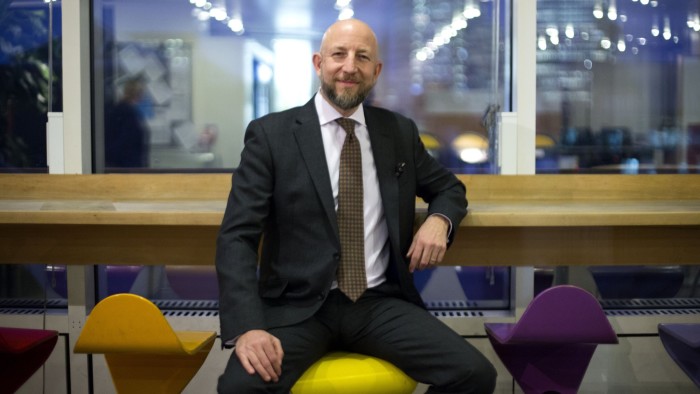Best of Money: Investing costs and charges are designed to confuse

Roula Khalaf, Editor of the FT, selects her favourite stories in this weekly newsletter.
Confused? You will be! This was every week’s opening line of a 1970s comedy soap opera called, appropriately enough, Soap. With Soap, you got what you were expecting. It was mad. It was funny. It was brilliant and I watched it every week.
It could equally well be the catchphrase for another long-running soap opera entitled, “Disclosure of the costs and charges of investment products”. Except this story has not done what it says on the tin and it causes tears of frustration, not laughter. It should be taken off the air immediately.
Over the decades, regulators have tried many methodologies but have failed to give buyers of financial products a clear idea of what the costs will be. Failure is expensive because it makes it harder for buyers to make informed comparisons and damps price competition.
There has been a tendency to fall into Voltaire’s trap “Le mieux est l’ennemi du bien” — the best is the enemy of the good. In seeking perfection we have ended up with disclosure methodologies that bear little resemblance to reality and which 99.9 per cent of consumers never read anyway.
Here are some facts that illustrate the difficulties, followed by a prescription for what “good” could look like in practice.
First, take the annual management charge (or AMC). Let’s say it’s 1 per cent. Sounds simple, but what does it even mean? If you invest £100, does it mean you’ll pay £1 a year? No. If your investment is worth £200 after a year, does it mean you’ll have paid £2? Does it mean you’ll have paid £1.50? Almost certainly not.
An AMC of 1 per cent would in fact be deducted at approximately 1/220th of 1 per cent of the value of the fund each day. So the actual cost is utterly dependent on the daily value of the fund. And you cannot know what that will be.
Podcast

Listen to Daniel Godfrey, the ex-Investment Association head, outline why fund managers should be more transparent about their complex fee and cost structures
You don’t know on January 1 which of your holdings you’re going to want to sell and which to buy in the year ahead, how frequently or what the “spreads” (the difference between the buying price and selling price of shares) will be. So the costs that a fund is going to incur in buying and selling holdings (the “dealing costs”) cannot be known in advance.
Finally, there can be a whole load of other costs borne by the fund on top of the annual management charge (custody, registration, research and other long words describing arcane practices that even I don’t understand). And there is a wide variation between funds and managers with some covering more within the AMC and others less. Some managers make a separate “administration charge” to cover some of these costs and some even make substantial profits on them. Did you know that?
Confused? Definitely. Time to bang your head against a wall in frustration? Probably.
It’s complicated. But there are ways to give investors and potential investors meaningful disclosure of costs and charges, to make them better informed, to help them make better decisions and to promote competition.
The biggest change would be for all the ongoing costs of running funds to be covered by the manager from a single all-inclusive AMC. No more separate administration charge, custody fees, registration fees, research costs and so on. Make it simple to understand and simple to compare.
You may ask why not include dealing costs in this single charge? Although it sounds attractive it’s a bad idea. Dealing costs are like the cost of paint if you have a decorator in: they don’t include the cost of paint and supplies in their daily labour rate. Dealing costs are part of the cost of getting the job done and you’d incur them if you did the job yourself.
Finally, recognise the difference between accountability for past costs and estimates of future costs.
Daniel Godfrey: fund managers need to put clients first

Sector needs to take a long hard look at remuneration, says ousted Investment Association chief
Read more
When accounting to investors for costs incurred over the past year, fund managers can set out, in pounds and pence per unit, every penny spent by the fund. They know the portfolio turnover rate and they have a pretty good idea of the typical spreads that applied. So they can disclose the impact on net returns (good or bad) caused by the changes they made to the portfolio during the year.
But if you want precise knowledge of what costs will be in the future, forget it. There is so much that is unknowable: the growth (or fall) in the value of the fund, the amount of trading and the level of spreads.
A percentage-based measure of the single all-inclusive AMC would enable better comparisons. Combined with past averages of portfolio turnover rates and spreads, this would help investors make informed decisions. But disclosure methods for total future costs can, at best, give a vague idea. They can be simple and they can be comparable. But don’t pretend that they are anything other than a heroic guesstimate: “If the AMC was x if performance was y, if portfolio turnover rate was t and if spreads were s, then the cost would be c.”
Good is eminently do-able. Let’s not forsake it for the impossible pursuit of a perfection that simply does not exist.
Daniel Godfrey is former chief executive of the Investment Association Twitter:@danielgodfrey_ ; daniel.godfrey@ft.com
Comments